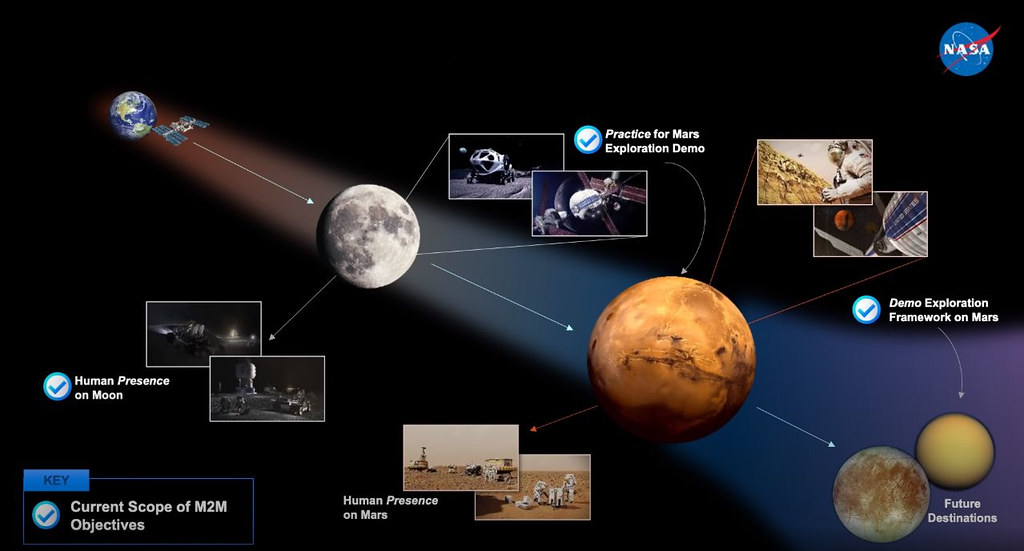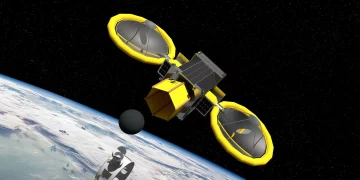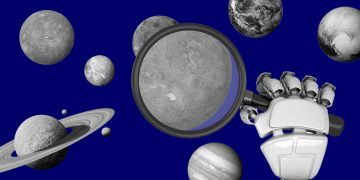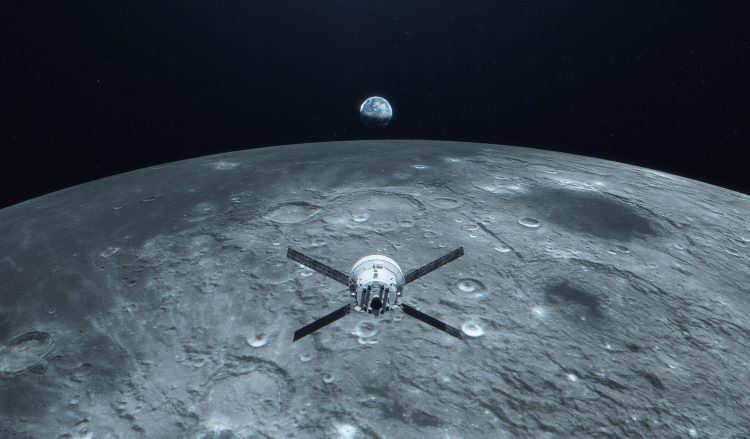Introduction
The Artemis program represents a bold new chapter in humanity’s space exploration journey, marking NASA’s return to the Moon after more than five decades. Underpinned by the goal of landing “the first woman and the next man” on the lunar surface by the mid-2020s, Artemis not only aims to revive lunar exploration but also to lay the groundwork for future missions to Mars and beyond. This ambitious plan envisions a sustainable human presence on the Moon, creating valuable experience that will inform the journey to Mars. This article explores the Artemis mission’s objectives, key components, and its broader implications for the future of space exploration.
1. Overview of the Artemis Program
Launched by NASA in 2019, the Artemis program is designed to return astronauts to the Moon and establish a sustainable presence by the end of the decade. Artemis is named after the Greek goddess of the Moon and the twin sister of Apollo, symbolizing the new phase of lunar exploration. The program is not just about returning to the Moon, but also about paving the way for humanity’s long-term exploration of deep space.
1.1 The Artemis I Mission: A New Beginning
The first mission, Artemis I, is an uncrewed test flight of NASA’s Space Launch System (SLS) rocket and the Orion crew spacecraft. The objective of this mission is to demonstrate the performance of these critical components in space, ensuring they meet the requirements for future crewed flights. Artemis I will send Orion on a journey beyond the Moon, orbiting the lunar surface before returning to Earth. This mission is a critical step in confirming that the systems are ready for human space exploration.
1.2 Artemis II: Crewed Mission Around the Moon
Following Artemis I, the Artemis II mission will be the first crewed flight of the Orion spacecraft, carrying astronauts on a flyby of the Moon. While the mission won’t involve a lunar landing, it will serve to test Orion’s life-support systems, navigation, and other critical systems in deep space. The crew will travel farther than any human has in over 50 years, preparing the groundwork for future lunar landings.
2. Returning to the Moon: Objectives and Milestones
The Artemis program aims to establish a sustainable lunar presence through a series of key missions and infrastructure development. By 2025, the goal is to land astronauts on the Moon, with a long-term vision of building a permanent lunar base by the 2030s.
2.1 The Lunar Gateway: A Key to Sustainable Exploration
A crucial aspect of Artemis is the development of the Lunar Gateway, a space station that will orbit the Moon. The Gateway will act as a staging point for missions to the lunar surface, as well as a hub for research and development in space. It will be an essential platform for testing technologies needed for the journey to Mars, including life-support systems and deep-space communication technologies. The Gateway will also be capable of housing astronauts for extended stays in space and will serve as a command center for operations on the lunar surface.
2.2 The Lunar Surface: Living and Working on the Moon
The next phase of Artemis will focus on landing astronauts on the Moon. In addition to simply landing on the lunar surface, NASA envisions a sustainable presence, requiring the development of surface habitats and technologies that can support long-duration missions. The lunar landers will be capable of transporting astronauts from the Gateway to the lunar surface. Once there, astronauts will work on research, conduct experiments, and demonstrate technologies that will be critical for future space exploration.
One of the key aspects of this effort will be to establish a permanent lunar base. This base will serve as a testing ground for technologies and techniques that will be necessary for future exploration missions, including the cultivation of resources on the Moon (known as in-situ resource utilization, or ISRU). The lunar base will also serve as a stepping stone for crewed missions to Mars.
2.3 In-Situ Resource Utilization (ISRU): Paving the Way for Mars
ISRU will be a vital component of Artemis and future missions beyond the Moon. By extracting resources directly from the Moon, such as water ice and lunar soil, astronauts will be able to produce fuel, oxygen, and other necessary materials, reducing the need for supplies to be sent from Earth. This approach will make long-term missions more feasible and cost-effective, both for lunar exploration and for Mars missions, where resupply from Earth will be impractical due to the vast distance.

3. Artemis and the Path to Mars
While the Moon has been the focus of space exploration for centuries, the ultimate goal of the Artemis mission is to use the Moon as a stepping stone for human exploration of Mars. The technology, experience, and infrastructure developed during the Artemis program will provide NASA and its international partners with the tools and knowledge needed to send humans to the Red Planet.
3.1 Technologies for Mars Exploration
The lessons learned from lunar exploration will be directly applicable to the challenges of Mars exploration. For instance, the Orion spacecraft is designed to be adaptable for long-duration missions, and its systems will be tested and refined during the Artemis missions. The Lunar Gateway will also provide valuable experience in long-term space habitation, which will be critical for extended stays on Mars, where astronauts could be isolated for months or even years.
NASA is also working on developing advanced propulsion systems, such as the Nuclear Thermal Propulsion (NTP) system, which will be capable of shortening the journey to Mars and making deep-space travel more efficient. The successful development and testing of these technologies will be critical for sending humans to Mars and beyond.
3.2 The Mars Surface: Challenges and Possibilities
Landing on Mars presents significant challenges, including the need for specialized landers, habitats, and life-support systems capable of operating in the harsh Martian environment. The surface of Mars is extremely cold, with temperatures averaging around -80 degrees Fahrenheit (-60 degrees Celsius), and its atmosphere is 100 times thinner than Earth’s, offering little protection from harmful radiation. To overcome these challenges, NASA is investigating technologies such as radiation shielding, self-sustaining habitats, and closed-loop life-support systems that will be necessary for extended stays on the Martian surface.
In addition, the presence of water in the form of ice on Mars will be crucial for supporting human missions. By tapping into Martian ice deposits, astronauts will be able to produce water, oxygen, and even fuel through ISRU.
4. International Collaboration and Partnerships
While NASA is leading the Artemis program, the mission is not a solitary effort. Space agencies from around the world, including the European Space Agency (ESA), the Canadian Space Agency (CSA), and the Japanese Aerospace Exploration Agency (JAXA), are working together to provide technology, expertise, and infrastructure. For instance, ESA is contributing to the Lunar Gateway, providing the International Habitation Module and the European Service Module for the Orion spacecraft.
The involvement of international partners will be essential in achieving the ambitious goals of Artemis, and these collaborations will strengthen the global community’s ability to tackle the challenges of space exploration.
5. The Human Spirit: The Long-Term Impact of Artemis
The Artemis program is about more than just technological advancement. It is about the human spirit of exploration and the desire to push the boundaries of what is possible. By returning to the Moon and working towards Mars, NASA and its partners will inspire future generations to pursue careers in science, technology, engineering, and mathematics (STEM). The Artemis mission has the potential to create new industries, foster international cooperation, and advance human knowledge.
Conclusion
NASA’s Artemis mission represents a monumental leap forward in space exploration. It is not only about returning to the Moon but about laying the foundation for humanity’s next great journey to Mars and beyond. With international collaboration, innovative technologies, and an unwavering commitment to exploration, Artemis will open up new frontiers in space, forever changing our understanding of what is possible. As we look to the stars, the Artemis program serves as a reminder that human exploration knows no bounds.


















































Discussion about this post